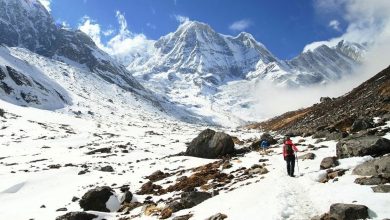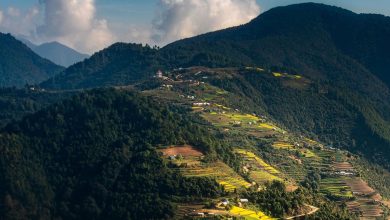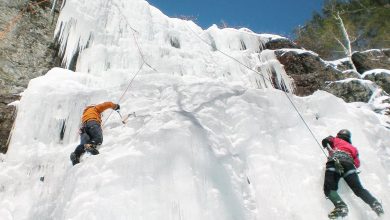Ngozumpa Glacier: Lambert Glacier In The Himalayas Of Nepal
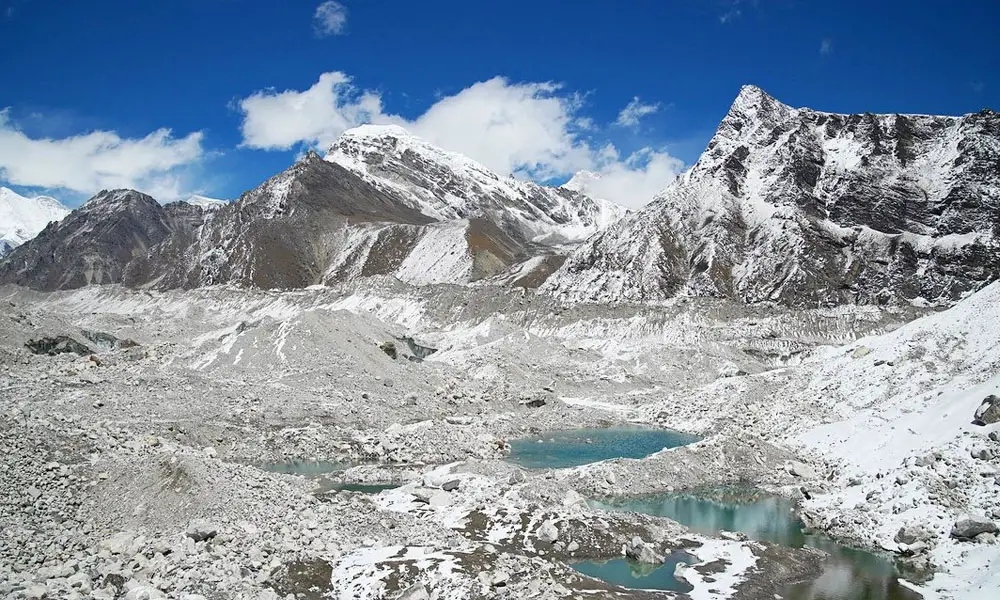
Ngozumpa Glacier is the longest glacier that, lies at 36 km in the Himalayas of Nepal. The glacier was a large body of ice in the beginning, but in the current time, it has become a glacier covered with rock. With the right pair of hiking boots, one can walk across the glacier with much ease than they could have in the past. The glacier has been shrinking and thinning over the years as it has been producing a heavier quantity of meltwater. As a result of this, an enormous lake has been growing. The Ngozumpa Spillway Lake can be considered the result of increasing global warming and meltwater from the Ngozumpa glacier. Though it has not yet created any trouble for the people living in the Sherpa villages, the near future of these people might be a threat.
There are just so many interesting facts about Ngozumpa Glacier. Make sure to read till the end of this article to know more!
Where is Ngozumpa Glacier located?
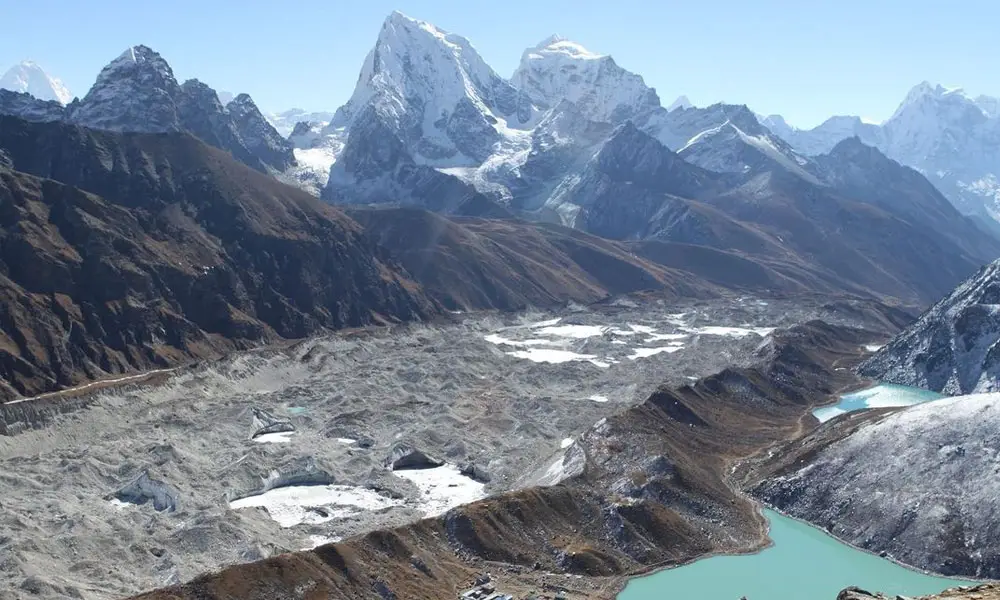
The Ngozumpa glacier is located in the Gokyo region in Khumbu, Nepal. The length of the glacier is approximately 36km in the Nepali Himalayas. It has been considered and measured as the longest glacier in Nepal. The mountain glacier is located in the Solukhumbu area, famous for its mountainous nature. The place has several mountains and other such glaciers that have been adding up to the beauty of Nepal. Khumbu, where Ngozumpa glacier is located, has often been one of those places that have always given tourists and nature lovers from Nepal some views and scenic routes to marvel at, and Ngozumpa glacier is no exception.
The place, unfortunately, had more amount of glacial and icy walls in the past than it does now. The once glacial and fully icy walls have now converted into rocky ones. The ice in the glacier is slowly melting due to the worldly climatic conditions leading to the growth of a glacial lake. There is a Sherpa village beneath the glacier, which is under threat due to the increase in meltwater in the Ngozumpa Spillway Lake.
How did the Ngozumpa glacier form?
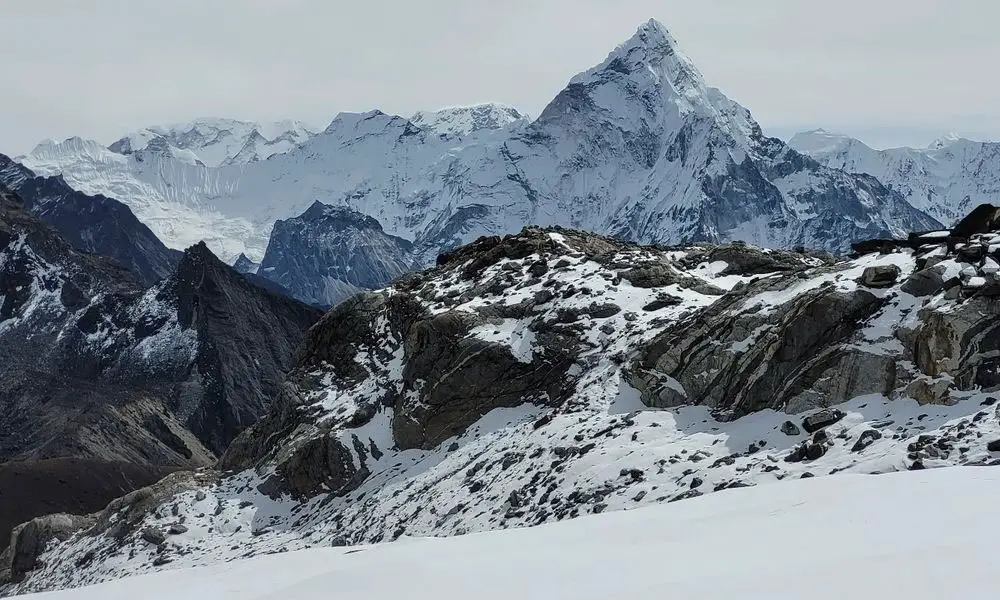
The Ngozumpa glacier formed through a process called compaction and accumulation. The snow and ice in the glacier were first accumulated and then compacted, which helped in forming the tightness and length of the Ngozumpa glacier. Accumulation is a process where ice or snow accumulates at the top of the mountain. The ice and the snow are then shifted to the lower ends of the mountain, creating a denser amount of icy layers. The ice and snow burden one another to the point that compaction starts taking place. As the heavier amount of ice comes on top of the ones already beneath it, it creates a heavy and large layer of ice that is packed tightly. This creates a glacier. The increase in glacier walls is done with this process.
However, with global changes in the climate, the glacier, instead of increasing and growing denser, has been melting and changing into water.
Ngozumpa glacier and the third pole connection
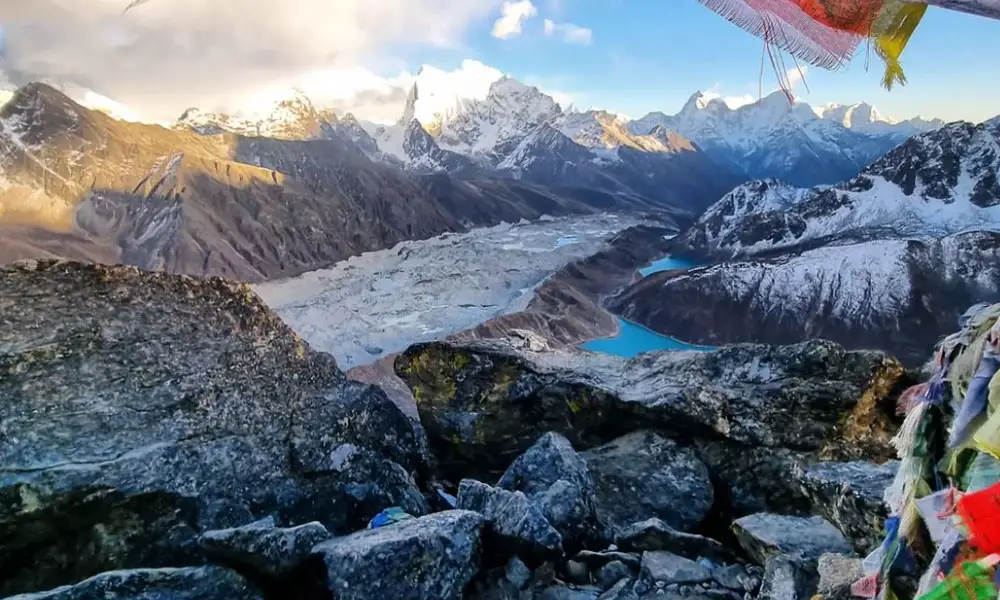
The Himalayas hold a great amount of water and ice. This gives it the name “Third Pole” to the mountain range. While there is no evidence of a third pole, the nature of the mountain range has often helped it in getting the label of third pole. And, since the Ngozumpa glacier is located in the Himalayan range, it is connected to the third pole.
The poles in the world are often associated with having the heaviest and densest amount of ice and snow, and the Himalayas are no exception. Ngozumpa Glacier has always had a very high deposit of ice and water in it. This makes the glacial walls an active part of the third pole as well. Furthermore, the Ngozumpa glacier is also an active part of the hydrological cycle in the mountains. Despite these facts, the glacier has raised concerns of melting due to global warming.
Climate change in Ngozumpa Glacier
The Ngozumpa glacier is one of the longest glaciers in the world and the longest one in Nepal. Sadly, this glacier has not been the same as it was in its beginning in the current time. This is due to global warming. The Earth is growing hotter and hotter day by day, and this has caused a negative change in the conditions of the glacier. The retreating glacial walls of the Ngozumpa glacier are more like a warning to the people who are living in the Khumbu Valley. The meltwater might show effects in ways that can harm a lot of people in the valley. Moreover, the natural beauty of the glacier is diminishing, which in turn affects how the place will be perceived in the upcoming years. Chances are, in a matter of a century or two, there won’t be any remnants of the icy walls, and only the lake that originated as a result is going to stay.
Ngozumpa Spillway lake
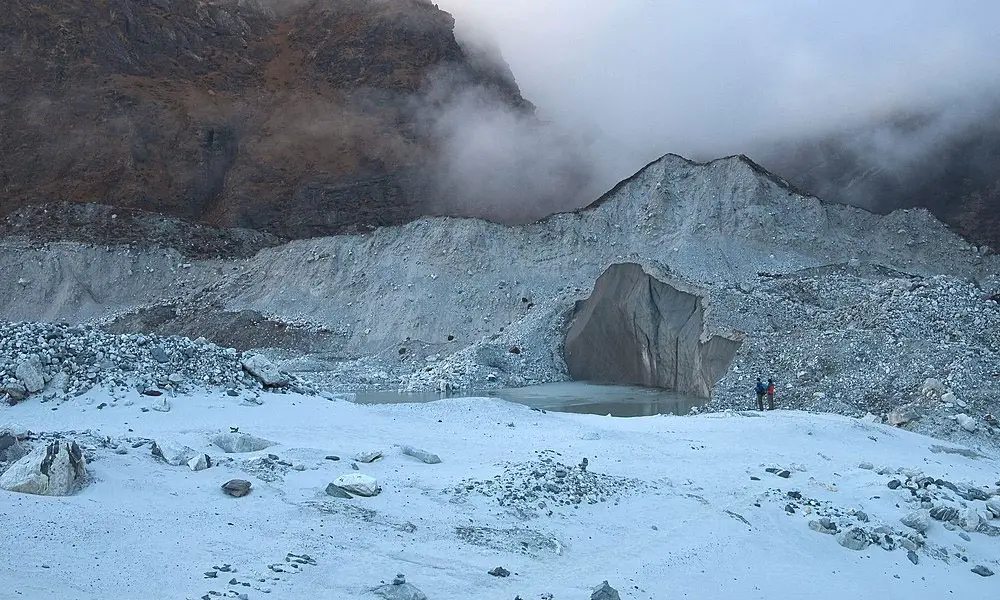
Nepal has not been safe from the effects of global warming. Every day, the size of the glaciers and mountains in Nepal has been decreasing due to the climate changes in the world. While the peaks and glaciers have decreased in size or shrunk over the years, the result of the shrinking in the form of meltwater has increased the size of the lakes or pools of water. An example of this is the Ngozumpa Spillway Lake. The Ngozumpa spillway lake is one that has grown denser in meltwater quantity due to the melting of the Ngozumpa glacier. There is the possibility of this lake being 6 kilometers (3.7 mi) in length, 1 kilometer (0.62 mi) in width, and 100 meters (330 ft) in depth. While the lake has only been adding to the beauty of the Khumbu valley, serving as a treat for the eyes of the onlookers as of now, there is a massive threat awaiting the Sherpas of the area along with the growth in the meltwater of this lake.
Some of the other notable glacial lakes in the area are Thonak Cho, Tanjung Cho, and Gokyo Cho. These lakes also are the result of the melting glaciers in the area.
Mountaineering around the Ngozumpa Glacier
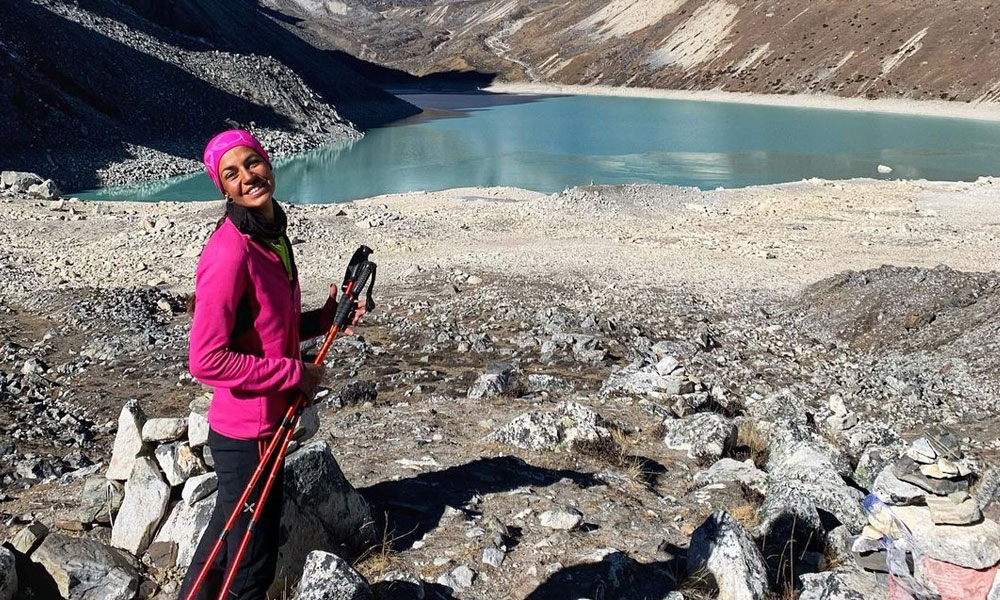
The Ngozumpa glacier is a very common place for hiking in the valley. While one might think of a technical climb with crampons and all the gears in the world as a necessity before climbing the glacier, it is a thing of surprise that climbing this glacier does not require any fancy gears or even crampons. The ice in the glacier has melted almost completely. Hence, there aren’t a lot of glacial walls you will be walking through. The walls of Ngozumpa glacier are mostly rocky. Hence, you can make the climb with only your hiking boots.
This certainly does not mean that you go there without any precautions. One has to make sure to be extra careful when he is at it. The climb is definitely not as easy as one may think, even with only the rocky walls of the mountain. Mountaineering in the Ngozumpa glacier will not only give one the climb of a lifetime but will also serve beautiful views of the Ngozumpa spillway lake right beneath. The lake, however, does not only add beauty to the place but also adds to the danger of this place. One small mistake might lead to death as the lake has grown deeper with time. Furthermore, while you wouldn’t need any equipment, having ropes tied properly with the help of an experienced guide or Sherpa might be a good way to go!
The difficulties of going through the glacier are added to the unforeseen incidents that might be coming on the way. Ngozumpa glacier’s crevasses and rugged terrains add to the hardships of the climbers. Not everything is smooth for the climbers, and they might have to undergo a lot of struggles while making it out of the Ngozumpa glacier safely with the additional danger of unpredictable weather changes.
Importance of Ngozumpa Glacier to the researchers
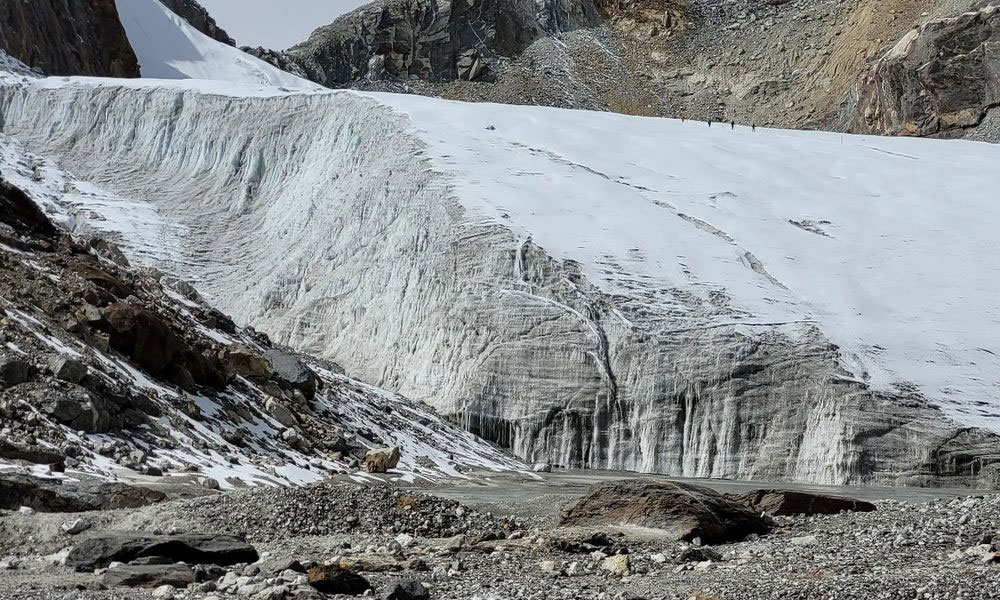
Not only do the mountaineers and adrenaline junkies find the Ngozumpa glacier fascinating, but there are also many researchers who have been eager to conduct their research on the glacier. Scientists and glaciologists have great value to add to the study of the Ngozumpa glacier. The research conducted in the Ngozumpa glacier helps to determine at what rate the glacier has been melting and how much meltwater has gone to the lake as of now. Likewise, with further research, these professionals also find the reason for the excessive flow of meltwater, the dynamics and complexities of the glacial changes, the rate of retreat, the thickness of the ice, and the flow of ice water. The reasons behind global sea rise can also be easily determined with the help of research conducted in Ngozumpa glacier as a case study of both the glacier and the Ngozumpa spillway lake.
Frequently Asked Questions
What is the longest glacier in Nepal?
Ngozumpa Glacier is the longest glacier in Nepal.
How high is Ngozumpa Glacier?
Ngozumpa glacier is 36 kilometers (22 miles) high.
Where is Ngozumpa glacier in Khumbu valley?
Ngozumpa Glacier is right below the Cho Oyu.
Which trail should be crossed to reach the Ngozumpa glacier?
The Tagnag trail should be crossed to reach the Ngozumpa glacier.
Which lake is the result of Ngozumpa glacier’s meltwater?
Ngozumpa Spillway Lake is the result of Ngozumpa glacier’s meltwater.
Also, read;
